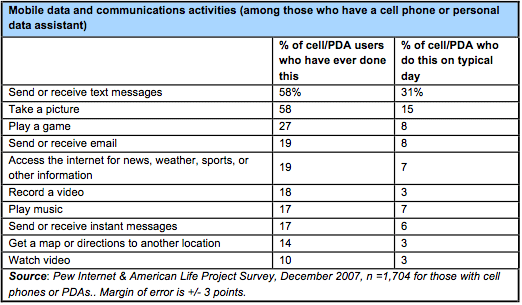I’ve got a busy week here so no big whopper posts. I’ll be taking the tried and true path of bloggers in a time crunch: The Roundup.
There’s been a lot of chatter lately about Twitter for Real Estate. Just in case you’ve not been paying attention I’ll give some links and quick summations. Also, don’t worry if you don’t know what Twitter is, most of these articles include a brief description.
Daniel Rothamel gives you all the basics in Welcome to Social Media for Real Estate 101: Twitter.
As you’re getting started and wondering who to follow, Jeff Turner’s Active Rain post about TwitterLocal is a great tutorial.
What’s TwitterLocal you ask? Look no further than PR 2.0 post “Twitter Local Connects You to Local Voices.”
How to write kickass Twitter posts gives you a great list of guidelines to give the most with your tweeting and prevents you from being dull.
Using Twitter to Stay in Touch at Connect gives a nice little rundown plus one use for the technology: keeping in touch during conferences.
Transparent Real Estate has more Twitter for Conferences information.
Joel Burslem breaks out a great use for Twitter: Business Intelligence. His post entitled Using Twitter to Listen to your Customers reviews the excellent BI/Reputation Management tool TweetScan. Includes examples.
Jessica Swesey is using Twitter to listen to general chatter about the real estate market.
If/when you get a group of people following your Twitter feed, perhaps Information Week’s suggestion for using it as a broadcast medium will be useful.
A laundry list of uses and examples can be found at Examples of Twitter Providing Business Benefits.
Even more business benefits and basic usage suggestions are at Twitter: Where’s it @ for Business.
Example of reputation management from 37Signals at the Twitter blog.
If, like me, you don’t much care for Twitter’s interface, check out the list of Twitter clients (I’m partial to Twitterific for my iPod).
A list of various tools to help you get more out of Twitter can be found at Jeremiah Owyang’s Web Strategy blog.
Did I miss anything?



